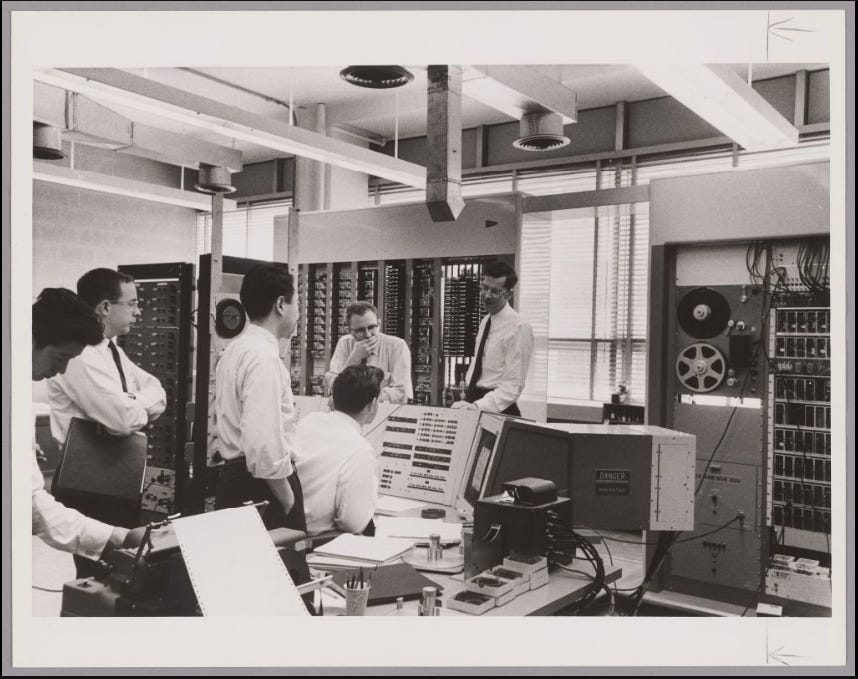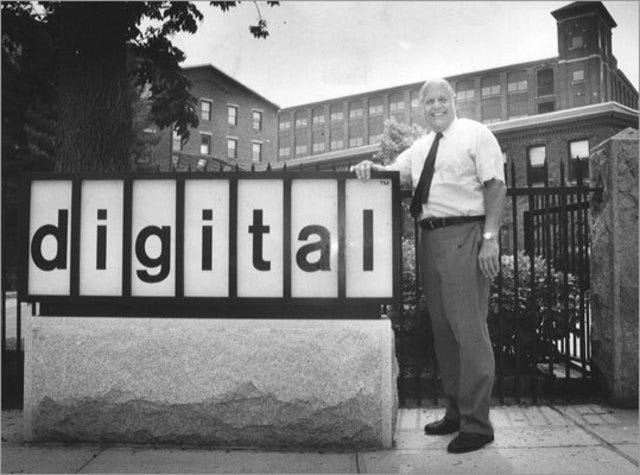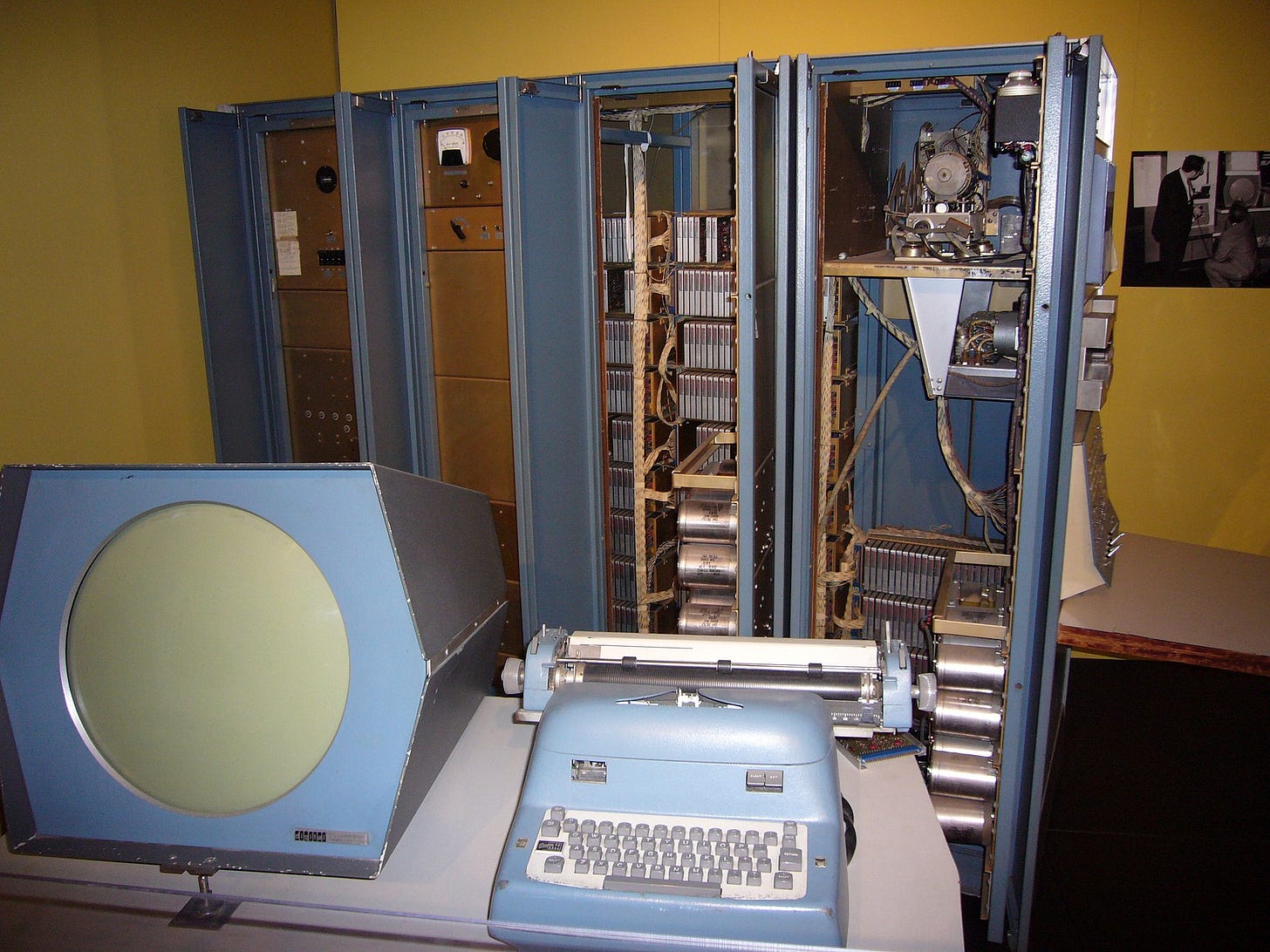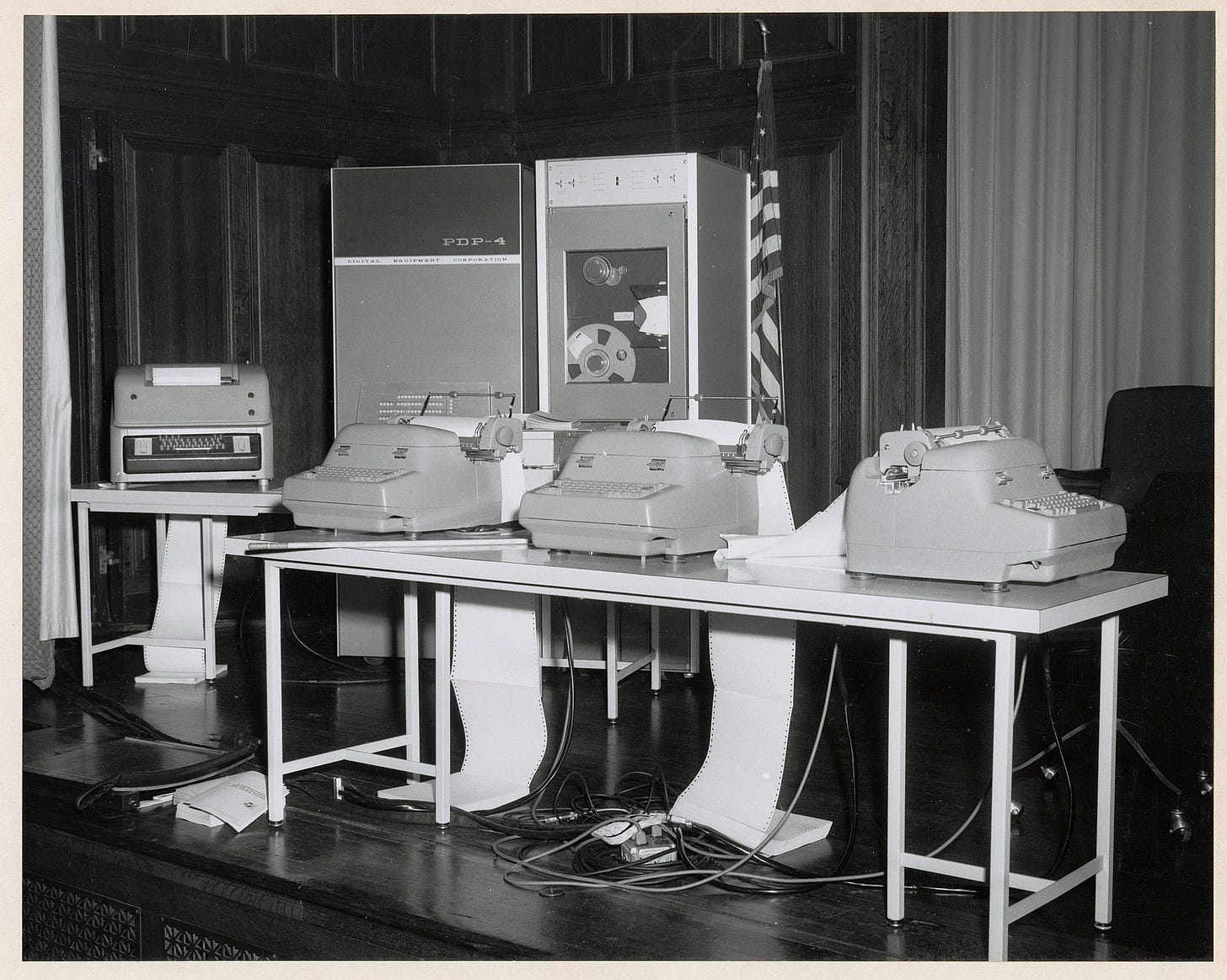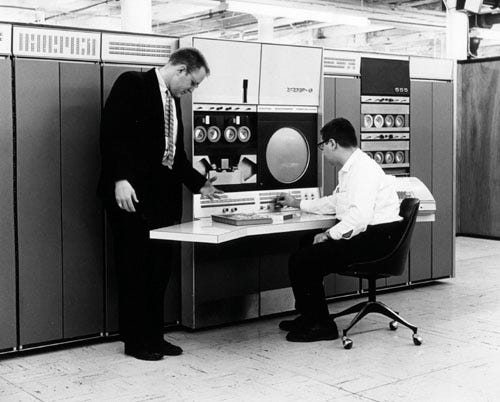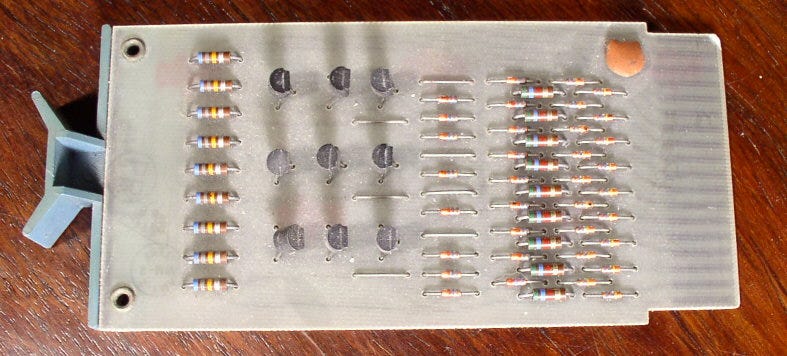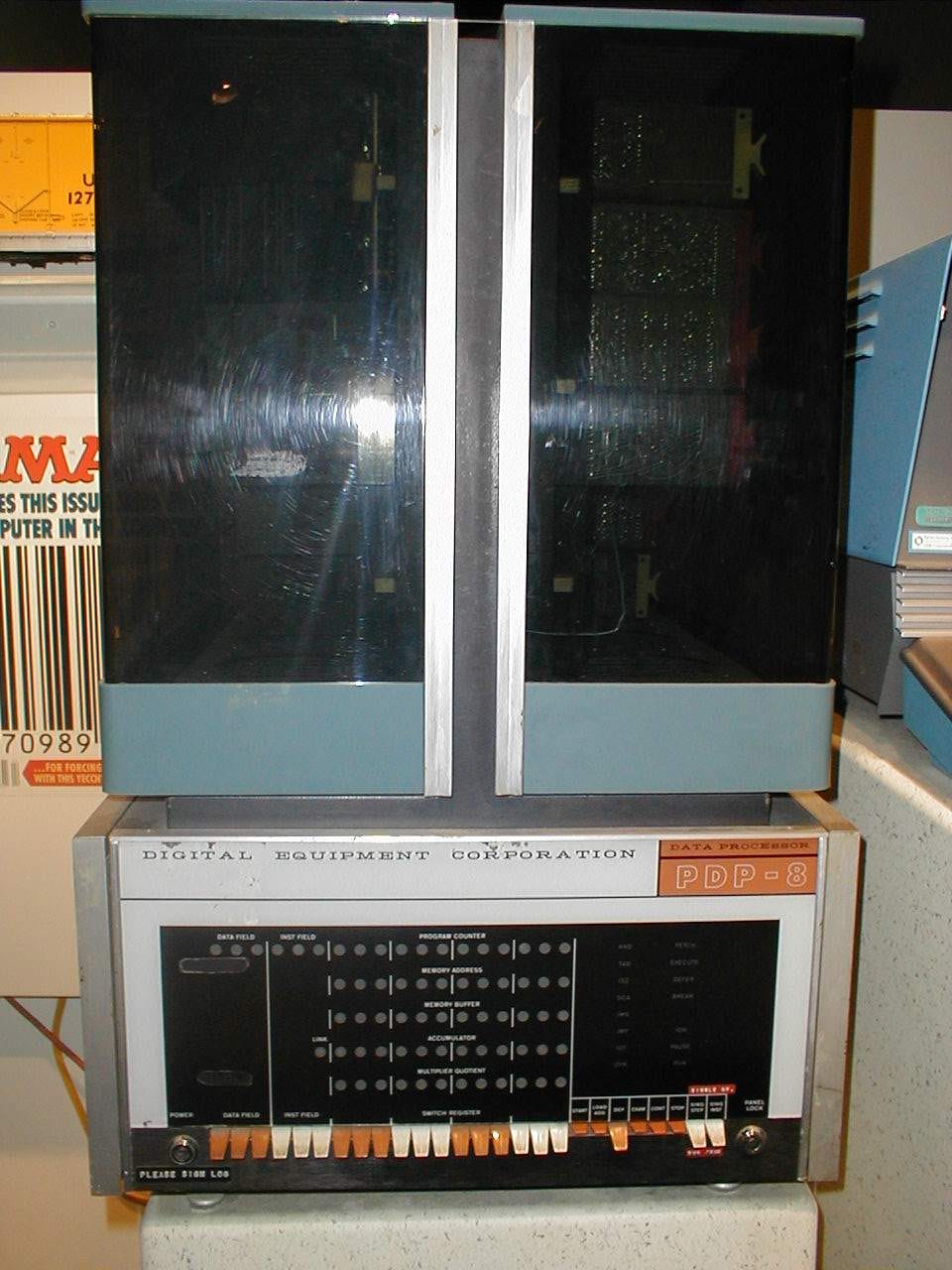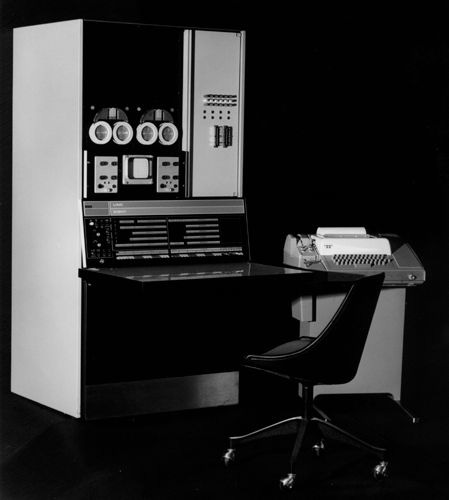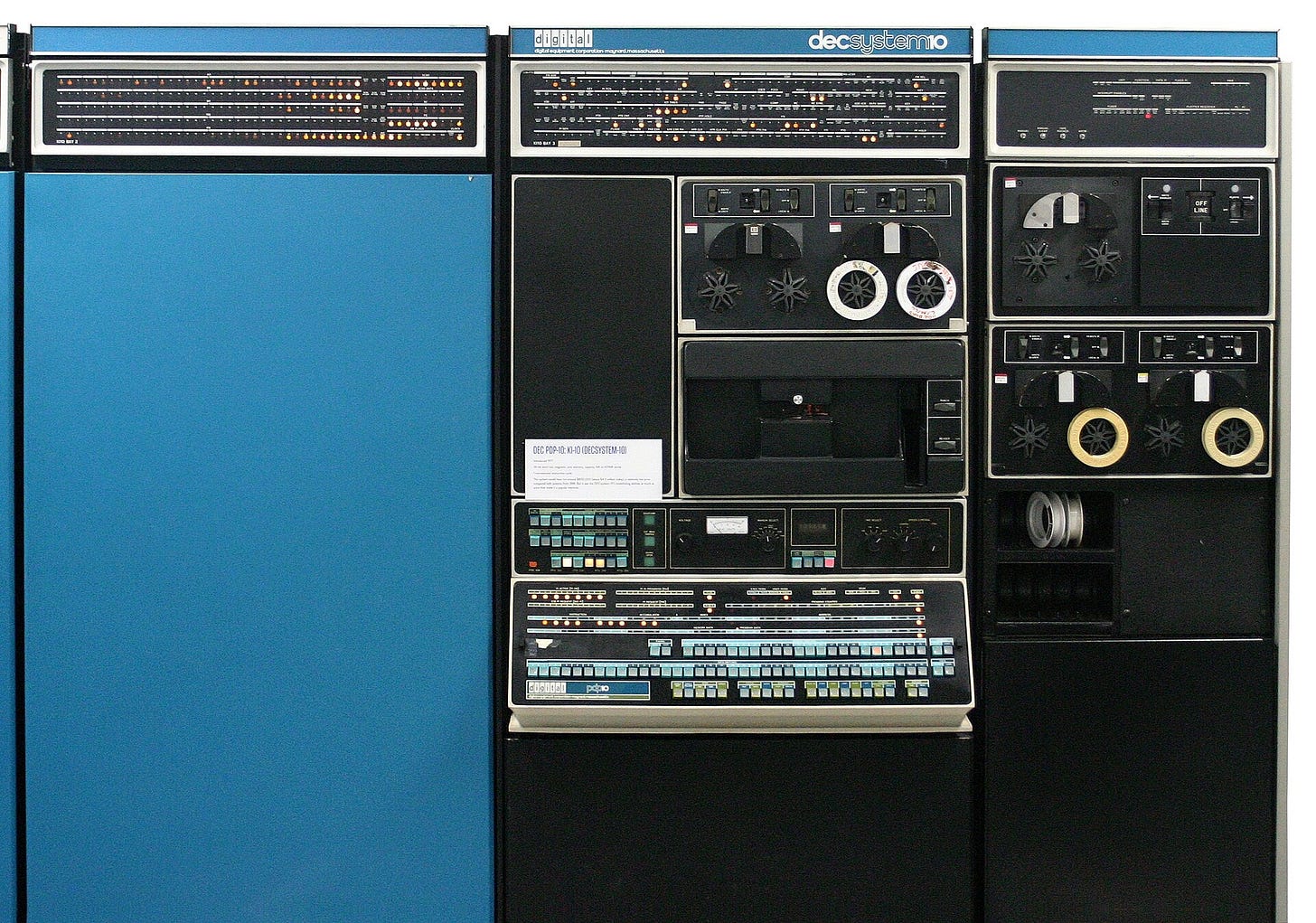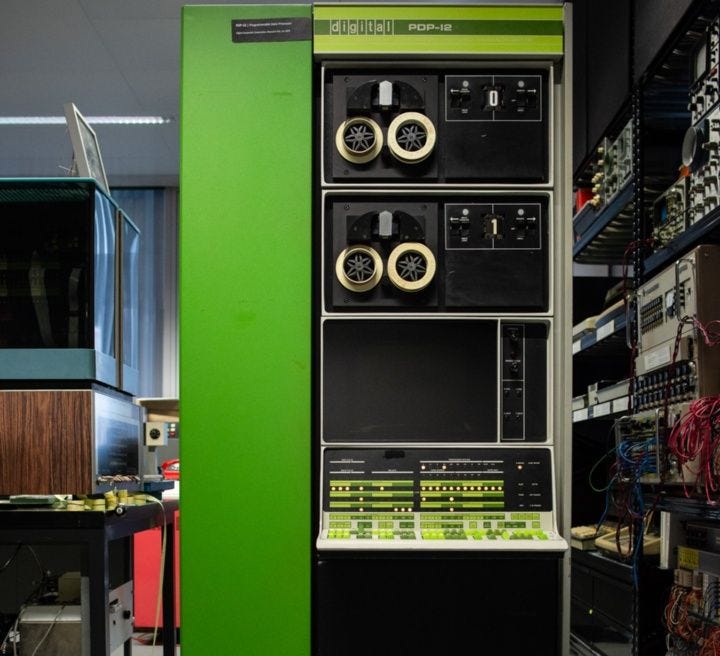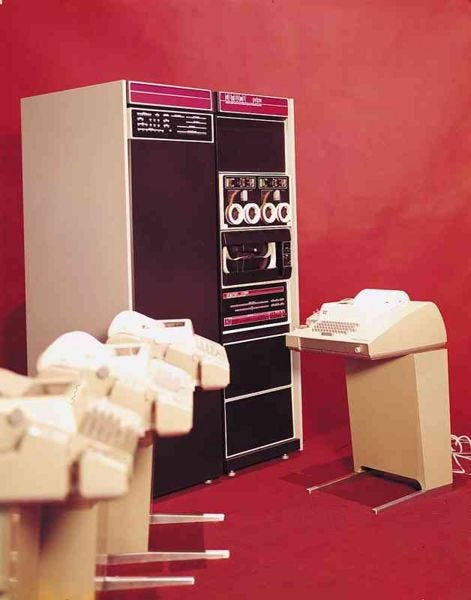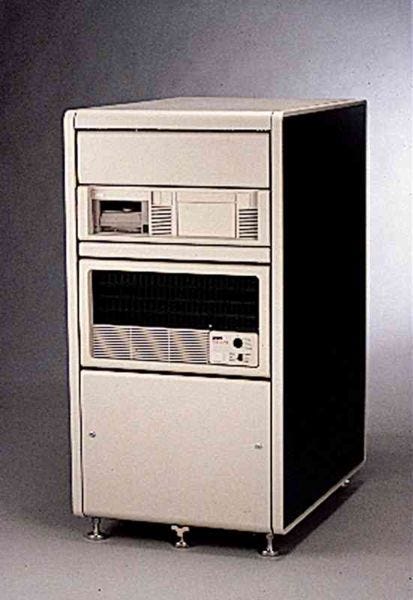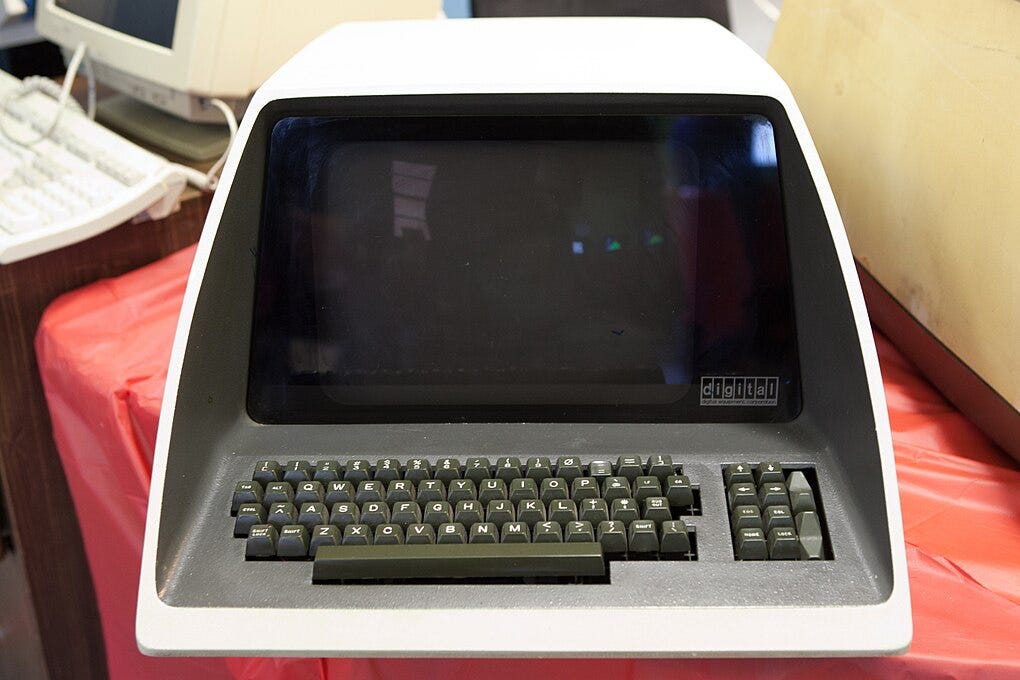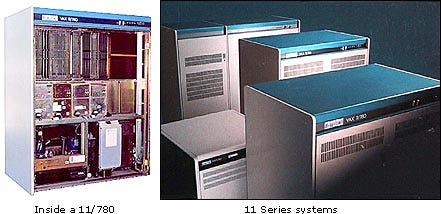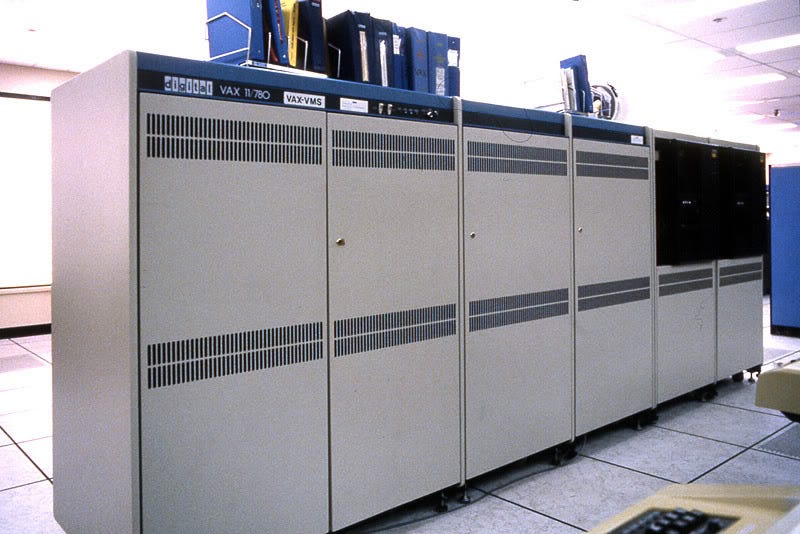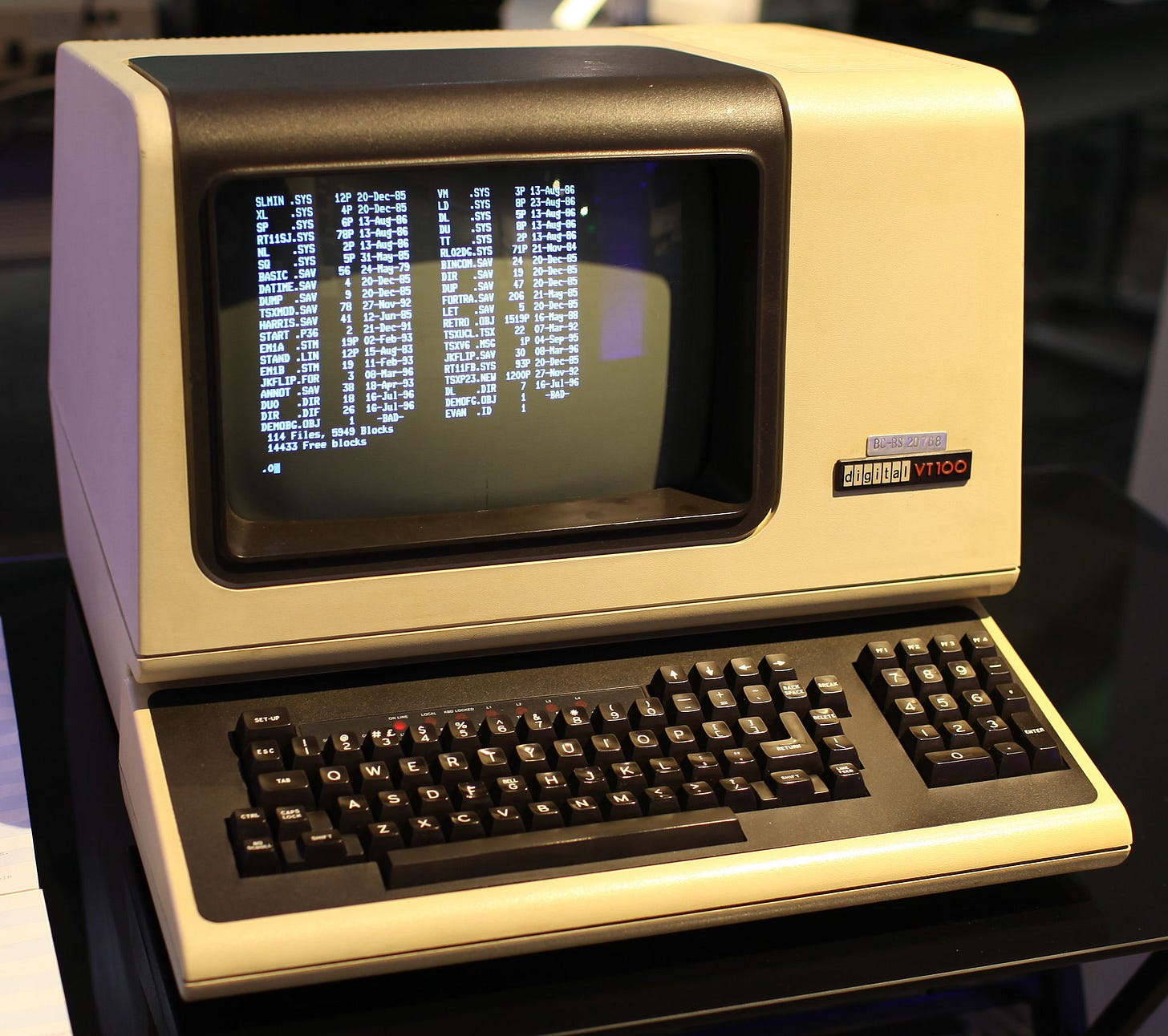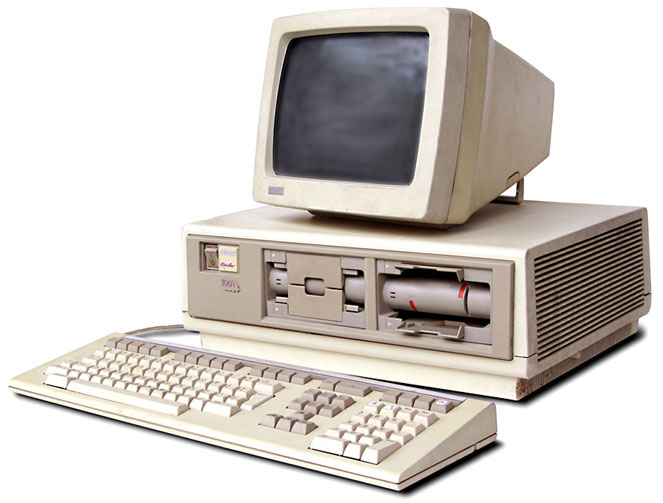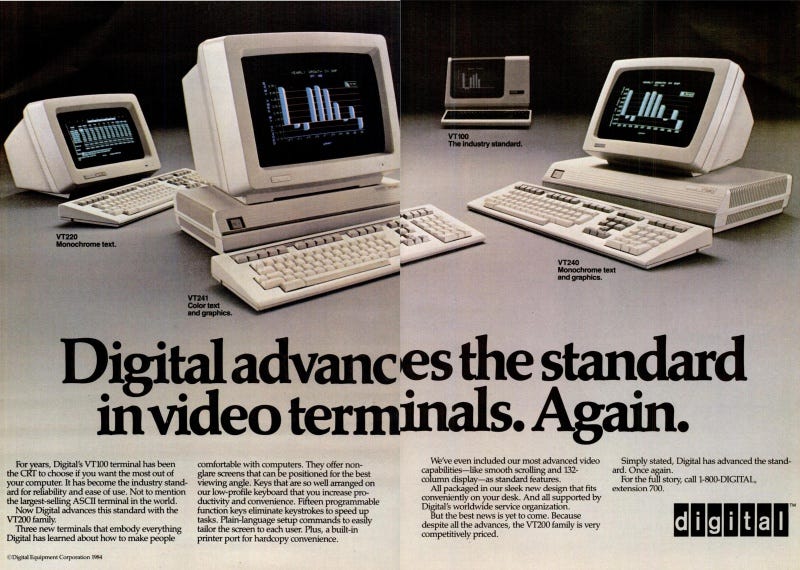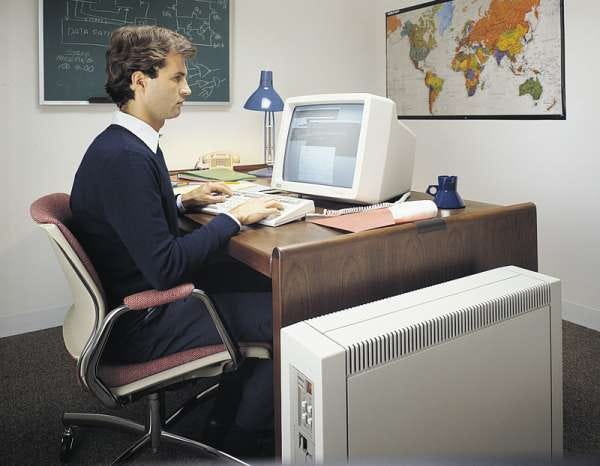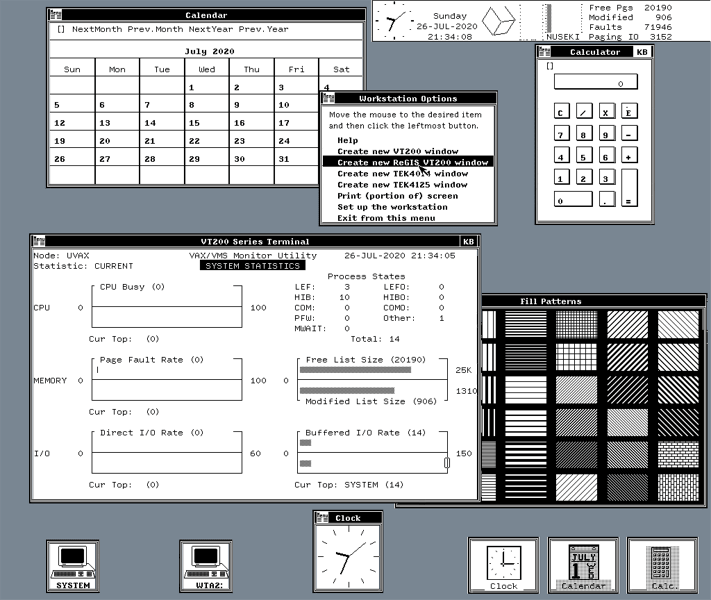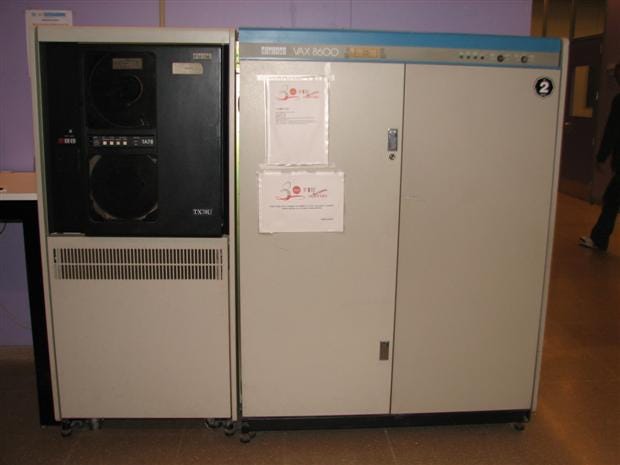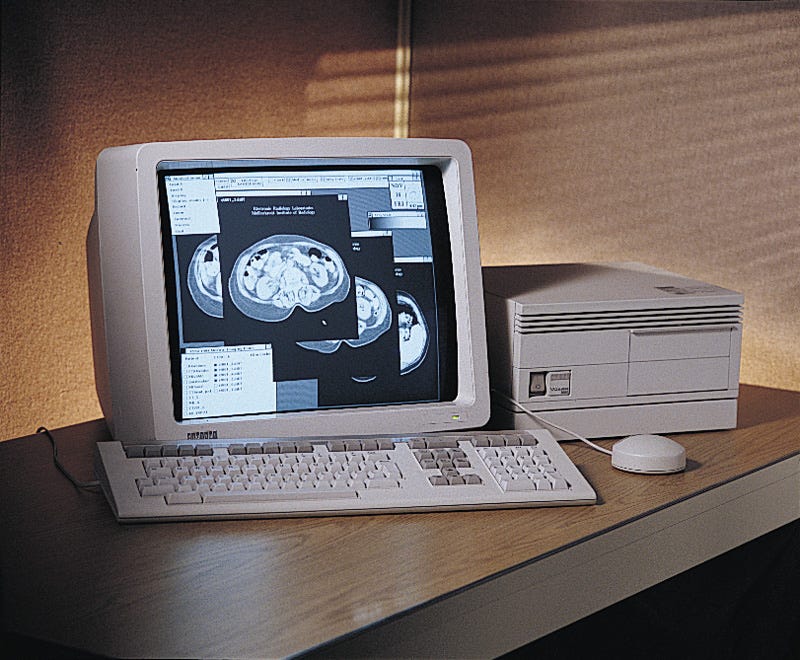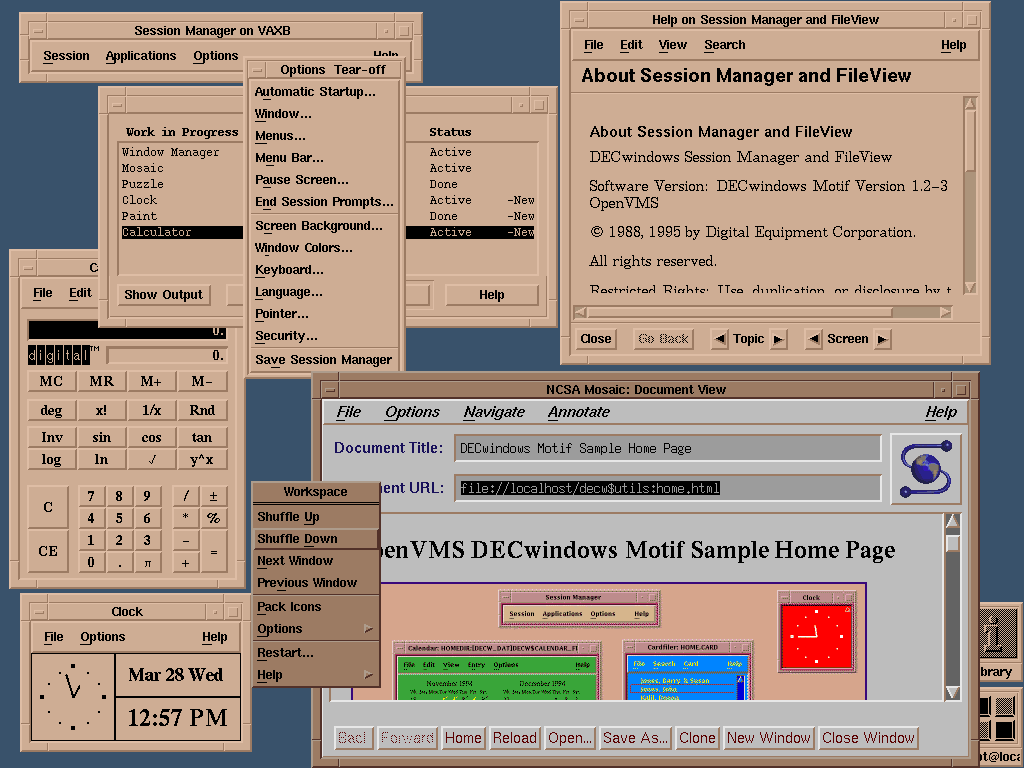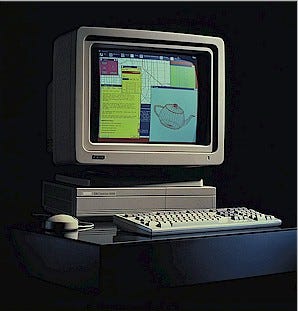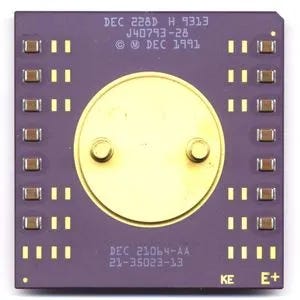Work at the Mill
Or, the Story of Digital Equipment Corporation
Kenneth Harry Olsen was born on the 20th of February in 1926 in Bridgeport, Connecticut, and he grew up in nearby Stratford. In the 1930s and 1940s when Olsen was a teenager, the electronics industry for the average person was essentially the radio industry. For Olsen, his window into that world was magazines, particularly Popular Mechanics and Popular Science. In the most common text books of the time, the topic stopped at the spark-gap transmitter, but Olsen was a voracious reader on the topic. He had a hungry mind, and he loved to experiment. Despite his lust for technology, he never had quite enough money to get the necessary components to satisfy his ambitions, but he worked with what he had. The greater Bridgeport area was a machine tool manufacturing hub, and most young men were somewhat expected to learn the trade and get some experience in the machine shops. Olsen definitely did so, but that work didn’t satisfy him and interest in electronics didn’t waiver.
Like so many young men at that time, Olsen was drafted on account of the Second World War at the age of eighteen. He went into the US Navy with his Boot Camp at the Great Lakes. He then went to Chicago where he got an education in the electronics of the time, followed by still more education and training at Monterey in California, and then still more on Treasure Island in San Francisco Bay. Olsen stated that all of the men in this program with him were rather excited and that they enjoyed the program. Nearly all of these young men were to be technicians on US Navy ships maintaining and repairing the new electronic systems being installed such as radar, radio, and even analogue computers for antisubmarine uses.
The first part of his enlistment was spent sitting in camp, and then going on a troop ship. When the war came to its end, he was sent to China for a bit assigned to an admiral’s staff. He spent some time on a couple of cruisers maintaining communications for that admiral. He had the opportunity to see a bit of China and Korea, but there was quite a bit of time spent idle on the ship. During that time, he and some of the other sailors did some electronics experimentation, not all of which was exactly by the book. For example, they built a switching system for the radio that would automatically start a motor generator to allow them to send communications with higher power than would normally be available just so they needn’t wake any of the mechanical guys.
Olsen left the Navy in 1946 and he enrolled at MIT in February of 1947 with several other veterans. He went for four terms without any vacation, and he was recruited to work at the MIT computer laboratory. Up to this point, Olsen had no concept of a computer at all just like most people on Earth. There, he worked on Whirlwind for the Office of Naval Research. His largest contribution to Whirlwind was the Memory Test Computer, which as the name would imply, tested the core memory of the Whirlwind computer (originally, Whirlwind used electrostatic memory tubes but was upgraded to core memory after Jay W. Forrester invented it {though magnetic core memory was invented by many people independently around the same time}). Whirlwind was a 2000 square feet monster weighing in at 20,000 pounds. It was comprised of 5000 vacuum tubes, had a 16bit word, and had the equivalent of 4KB of memory. This computer consumed more the 100kW. Olsen graduated with his BS in electrical engineering in 1950.
Before enrolling in graduate school, Olsen took a summer off and traveled to Finland. His parents’ neighbor had had a Finnish girl, Eeva-Liisa Aulikki, who was a visiting student, stay with them. Olsen liked her and he failed in his initial pursuit. Yet, Olsen was a determined man. He got a job at a ball bearing factory in Goteberg. He courted her, he proposed, and she said yes. At the time, it wasn’t all that easy for a Finnish person to immigrate to the USA, and while Olsen now had a fiance, he couldn’t easily bring her to the States. He came back to school, and he visited her that following December. This time, he wasn’t leaving without his fiance. He stayed in Finland for six weeks. This put him behind in school, but he was able to keep his job and his enrollment. The two returned, and were married.
Olsen completed his MS in electrical engineering in 1952, and he set about building a transistorized computer. While MIT approved the project, they didn’t make it easy for him. The school set the terms that he could hire approximately zero people and that he could have approximately zero space. Olsen considered these constraints seriously, but he then realized that these terms weren’t as rigid as one might assume. While he could hire no one, he could have people volunteer to help him, and while he couldn’t have space, he realized that hallways weren’t exactly counted as “space.” He and three others setup in the hall outside of his office and put a few walls around it. After a short time, they traded their makeshift area for a spot in the basement, and they then discovered that part of the Lincoln Laboratory’s basement was unfinished, just a bare dirt floor. Well, Olsen managed to convince someone to pour concrete, another someone to put in a light colored floor, and they painted the concrete masonry walls. They put in enough lighting to make their new location the brightest of any in the lab building.
The computer that Olsen and his team built in that basement was the TX-0. It was far smaller than Whirlwind, and it was slightly faster. This machine used a vector display like its larger sibling, but it was a fully transistorized 18bit computer, had a 16bit address range for its core memory, and it could use a light pen. The TX-0 was finished in 1956. Almost immediately, work began on a much larger and more ambitious machine, the TX-2. Olsen was working on the hardware for that, but he became impatient with the team designing the logic. It was in 1957 that he chose to leave. He had some well reasoned confidence in his choice.
Olsen wanted to start a company that sold small, transistorized, interactive computers. The TX-0 showed that interactive computing was more appealing to people than the prior batch paradigm. While people would queue for hours for time on the TX-0, they largely ignored the larger and more powerful machines that ran batch. Much of this is likely due to turn around time. Programming typically involves making quite a number of mistakes. With your typical IBM of the era, you’d bring your program in on a stack of cards, they’d be read, the program would be run, and you’d come by the next day to pickup the result. Given the likelihood of having made a mistake, it could take a week or two to get the intended results. With an interactive computer, the turn around was immediate.
Olsen had the idea, and a colleague from MIT, Harlan Anderson, was with him. Right away, Ken Olsen’s brother, Stan, was brought in. Stan Olsen went about trying to secure some funding. This wasn’t easy. There was a bit of a recession setting in, and most major financial companies weren’t thrilled at the prospect of funding a computer startup. They eventually found out that American Research and Development Corporation was a company founded to do just this. AR&D was founded by General Georges Doriot and was one of the first venture capital firms. They’d had some of their other computer investments fail, and even they, who opened shop for this express purpose, weren’t too excited. They were willing to invest, but they had some advice. First, they suggested that the new company drop the “computer” from Digital Computer Corporation, and so the company name became Digital Equipment Corporation. Second, they advised that the group change their expected profit. The three had started with an estimate of 5% but they bumped that to 10%. Finally, AR&D suggested that they aim to have an extremely quick return, and so DEC promised results in a year. AR&D was a bit unusual, but they fit DEC extremely well. They believed (or at least Doriot did) that investments should be long-term, not just buying and selling at the first opportunity for profit. They’d stick it out until the company was successful or until the company failed. Essentially, AR&D was patient, and they believed in really giving it a go with their investments, and Doriot would mentor companies when such was desired.
The company planned to sell circuit modules before attempting to sell complete computers, and Olsen had largely worked out the technological side of that. The real first step then was to create the financial plan for the company. Olsen and Anderson did so, and they presented that plan to AR&D who provided them with $70,000 which would be around $786,000 in 2025 dollars. With that money, the infant DEC of three men bought the equipment they would need, made some silk screens, etched boards and dipped them in solder. Everything. They were extremely careful with their money, and they learned quite a bit. While they did learn how to handle accounting and business operations, they chose to spend some of their limited funds on secretaries, accountants, and other supporting roles.
The company setup their company in the old Assbet Woolen Company’s mill in downtown Maynard, Massachusetts. As the company grew, they took over all nineteen buildings on the site, and the company purchased the building in 1974 for $2.2 million.
In 1958, DEC released the Digital Laboratory Module line. These were essentially printed circuit boards in extruded aluminum housings with germanium transistors mounted to them. These were circuits based on those that had been used in the TX-2. While the intent was to have these on an engineer’s workbench, Digital also offered a rack-mount case that would hold nine modules. Versions of these were made running at different speeds: 500kHz, 2MHz, 10MHz. In the first year, the company had $94,000 in revenue from module sales which would be roughly equivalent to $1,055,000 in 2025 dollars. The company made good on its promise to post profits in a year.
These modules were then used by DEC itself to build whole machines. The first of these was a memory test machine. Yet, this wasn’t what brought the company its first hit. That honor goes to the Programmed Data Processor-1 or PDP-1. Of this machine, Ken Olsen said:
The goal of the PDP-1 was to introduce a new type computer to the world. In the tradition that was developed at MIT where the computer was very simple, very fast, relatively inexpensive. In this case, $110,000 with only 4000 words of memory. Because it was simple, easy to use, interactive with the cathode ray tube and light pen, it could be used by an individual. Someone could afford to sit there and use the computer like we do a personal computer today. You could also use the same equipment interactively with equipment, that is, with a machine or a telephone system because the price was relatively low. $110,000 thirty years ago was a lot of money, but computers then cost one, two and three million dollars, so it was relatively inexpensive. And it did open up new applications that people hadn't thought of before.
The PDP-1 was built of DEC modules, and it was based directly upon the TX-0 and TX-2. The design was extremely simple, it was easy to use, and it was interactive. As for technical specifications, it was built of 2700 transistors and 3000 diodes. While the transistors could switch at roughly 5MHz the actual CPU speed was about 187kHz which resulted in most instructions completing in around 10.7 microseconds. This means the PDP-1 could manage around 93,458 operations per second though for simple additions this could be up to 100,000. The machine shipped with 4K words (18bit) of memory standard which would be equivalent to 9.2KB, but could be upgraded to 65,536 words. Setting the PDP-1 apart from pretty much all other computers of its day were lack of need for special power considerations, subflooring, air conditioning, and other accommodations. Interestingly, the temperature of the PDP-1 was controlled by the computer itself to maintain a temperature of between 50 and 110 degrees Fahrenheit. The system shipped in four cabinets and occupied a total of 17 square feet of space. It weighed in at about 1600 pounds.
Standard equipment was a PDP-1 with 4K words RAM, a paper tape reader, a typewriter with on-line input and output, and a paper tape punch. Optionally, the customer could purchase a CRT, a light pen, card punch and card reader, tape drives and tape controllers, more memory, and multiply/divide accelerator cards. The math accelerators would have been absolutely essential for many customers when one considers that the average time for a division without an accelerator was about 600 microseconds. As you can likely infer, storage was primarily on paper tape. For “finished” results the paper tape output could be taken to a Flexowriter for offline printing. DECtape drives were available by the time the first PDP-1 was formally accepted, and some PDP-1 installations added these. The first delivery of a PDP-1 was to Bolt, Beranek and Newman in November of 1960 with formal acceptance in 1961 (at latest by April). BBN’s PDP-1 was then used for research projects that they undertook for both government and private industry. A total of 53 PDP-1 systems are known to have been delivered but 55 were made, and one of those was a donation to MIT. The PDP-1 is among the most important computers to have ever been made. It was the birthplace of the text editor, word processor, interactive debugger, computer chess, Spacewar!, and while not the first, it was the birth place of what was certainly among the earliest time sharing systems (BBN TS). Even music was made with the PDP-1. Using four flip-flops controlled directly by the PDP-1’s processor, the PDP-1 could play music in four-part harmony prepared by Peter Samson’s Harmony Compiler. It was with the PDP-1 that hacker culture truly started (though the TX-0 and TX-2 were the most absolute origin). Yet, even that doesn’t fully describe the importance of the PDP-1. It was the first commercial computer that emphasized user interaction over the efficient use of computer cycles. In this sense, the PDP-1 was the first personal computer. Naturally, due to the price tag, there were likely zero PDP-1s bought explicitly for use by a single person, but it brought about that model of use. Emphasizing this, we again have the words of Ken Olsen:
… we believed computers should be fun. They were exciting. They could do so many things. The opportunities were just without bounds.
In 1960, DEC had around 117 employees, and they finished the year with $1.3 million in revenue.
In 1962, DEC introduced the PDP-4. For the most part, the PDP-4 was a smaller and cheaper version of the PDP-1. Primarily, the PDP-4 used slower memory, was priced at $65,000, and weighed in at 1090 pounds. Over time, DEC sold 54 PDP-4s. With the PDP-1 and PDP-4 on the market, the company’s profits for 1962 were $807,000 on sales of $6.5 million.
Some may wonder what happened to PDP-2 and PDP-3. The PDP-2 was designed as a 24bit machine, but the design was never completed. The PDP-3 was a 36bit machine, and only one was ever made as far as I can tell and then not by DEC. The lone PDP-3 was built in 1960 at CIA’s Scientific Engineering Institute in Waltham, Massachusetts, and it was called CASINO (Computer Able to Select INternal Orders). In From RAINBOW to GUSTO by Paul A. Suhler, I found the following:
As the amount of radar testing at the Ranch increased, the scientists at SEI decided that the data had become too much to process by hand. To speed things up, they decided that a computer would be needed. The difficulty was that no computer within their budget was available off the shelf. So they decided to build their own.
In October 1960, the Digital Equipment Corporation (DEC) had produced a specification for the PDP-3, a new system in their line of programmable data processor minicomputers. Ed Rawson took charge of the project and with the help of Chuck Corderman and Jay Lawson designed and built a PDP-3 using standard DEC logic modules. Because disk drives were not available, a tape loop running through an Ampex tape drive held intermediate results; eventually, the tape loop was replaced with a drum memory. The project was run like a homebrew computer project, with more emphasis on getting the machine and software to run rather than on making it well documented and easy to use. The design evolved so rapidly that when one of the engineers returned after a two-week absence, he didn’t recognize it. The design evolved away from the original PDP-3 architecture, and it came to be called CASINO.
Eventually the system worked. Radar data were recorded by EG&G at the Ranch on 1 inch wide data tapes and shipped to SEI. The data could be processed correctly, but the computer could usually only be operated with Rawson looking over the user’s shoulder. Eventually, the PDP-3 was discarded; one computer engineering textbook stated that in the early 1980s it was running somewhere in Washington state, but the author of that book could not confirm it. There is an unconfirmed report that it was donated to a Boy Scout troop and eventually given to Dow Chemical for disposal. It was the only example of a PDP-3 ever built.
DEC themselves lacked the resources to build the PDP-3, and the one customer who actually bought one was the Air Force’s Cambridge Research Laboratory. DEC arranged to provide them with two PDP-1s instead.
In the early 1960s, DEC was approached by Chalk River Nuclear Laboratories in Canada. The lab asked DEC to bid on a special purpose computer, but DEC responded with the offer to build an extremely simple general purpose computer that could accomplish the goals they had in mind. This was the impetus for the PDP-5, and its design was based on the LINC from from MIT’s Lincoln Laboratory. This machine was quite different from DEC’s prior computers. It had 12bit words, a maximum of 32,768 words of memory, and just eight instructions. With so few instructions, just 3 bits of a word were used for op-codes. In its base configuration (with just 1024 words of memory), the PDP-5 was a single cabinet, nineteen inches wide, with 150 printed circuit boards each containing over 900 transistors. It weighed in at 540 pounds. The PDP-5 was first shown to the public on the 11th of August in 1963 at WESCON. Pricing for the PDP-5 started at just $27,000, and DEC produced over 100 of them. For 1963, DEC made a profit of $1,180,197 on revenues of $9,906,968.
The PDP-6, released in 1964, was Digital’s first large computer. This machine used a 36bit word just like the big machines from IBM, and unlike most big machines of that era, it had a time sharing system as standard. The PDP-6 did, however, retain 18bit addressing meaning that machine was limited to the equivalent about 1MB of RAM which was implemented using magnetic cores. The exceptions to core memory were the processor registers which were implemented with transistors. The base model was configured with 32,768 words of memory, equivalent to about 144K. The advantage of the 36bit nature of the machine is most readily seen in two 18bit addresses being stored in a single memory location, meaning that two 18bit addresses could be read and written with a single operation.
The typical PDP-6 weighed between 1300 and 1700 pounds, and pricing ranged from $120,000 to $300,000. In the highest end configuration, a PDP-6 would have had both a disk drive and several tape drives. With dual DECtape drives, a PDP-6 could support around four users, and with a disk drive one could support around twenty users. Given the expensive price, not many were sold (just 23). Despite the low sales volume, the PDP-6 was one of the most important computers for the history of the industry due to its software. The PDP-6 shipped with an operating system called PDP-6 Monitor that would become TOPS-10 with version 5.01 in 1970. It is from TOPS-10’s command line interface that the design for Gary Kildall’s CP/M would emerge; a legacy that continues with Windows’ use of / for switches and thus \ for paths. If that isn’t enough, it is also on the PDP-6 that MIT’s Incompatible Timesharing System (ITS) would begin its life.
Another development in 1964, DEC began redesigning their machines with Flip-Chip modules. These Flip-Chips were the replacement for their previous System Modules, and they cost less. The first versions were four inches long and two and half inches wide. These Flip-Chips allowed system designers to work at a higher level than discrete transistors or diodes (think gates). Over time, these came in varying sizes, used ICs instead of individual transistors, and saw price reductions. The first Flip-Chips had a cost between $350 and $750 in series A (DACs, amplifiers, etc), and a cost between $15 and $57 for series B (logic).
The first system to be redesigned was the PDP-4 which was introduced as the PDP-7 in December of 1964 at a price of $72,000. Digital produced something around 120 PDP-7s over time, and this was the machine on which UNIX was written. Memory cycles for this machine were just 1.75µs, and addition took just for 4µs. An original PDP-7 weighed in at 1100 pounds. Units began shipping in November of 1964.
Success forced some changes at DEC. Initially, the company didn’t hire folks formally trained or educated in computing, and it didn’t have much structure. Partially, there just weren’t a ton of people with experience in the field, but also the company didn’t have a ton of money. Then, there’s the fact that given the simplicity of DEC’s earliest hardware, there wasn’t much need for incredibly experienced people. So long as a person were generally bright, he/she could be trained on the machines quickly. The earliest hardware was simple enough to be thoroughly understood by a single person, and often with little need for any kind of reference once that understanding were gained. Once the company was successful, they had the money to hire the best and brightest minds in the industry, and they did. By this point, DEC’s reputation for excellence, outstanding value per dollar, and customer focus was building if not firmly established. That DEC would listen to customer needs and tailor machines to those needs was part of that reputation. Yet, internally, DEC was also innovating. In 1964, the company had a bit of a crisis. With large amounts of growth both internally and externally, the various parts of the company weren’t working well together and this led to shipment delays. Profits for 1964 dropped to $900,000 on revenues of $10,909,565. Olsen then restructured the company to have a team of product line managers. Each product line manager was essentially running a company within a company and competed against the others (usually in a friendly manner). Each manager was expected to take full responsibility for the product line under his/her supervision. For non-managerial employees and managers alike, they were encouraged to innovate, encouraged to challenge quotidian ideas, and they were encouraged to keep quality at the center of their work. Unlike most companies of that time, DEC also embraced diversity. People who previously weren’t exactly welcomed in the industry found their places at DEC. The company hired people of all races, both male and female, and even those with learning disabilities. Many DEC employees have stated that their time at Digital was their best experience in the industry.
With the versatility, low price, and ease of use offered by DEC’s computers, the company would often sell their machines without any visible branding to other computer vendors such as Intersil. Those company may make some changes or additions and then sell them as their own. The company also sold tape drives, disk drives, terminals, and other peripherals to OEMs, and this had the weird result of DEC at one time being both the largest purchaser of disk drives and the largest seller of disk drives.
The second system to get the Flip-Chip treatment was the PDP-5, which was introduced to the world as the PDP-8 on the 22nd of March in 1965 at a price of $18,500. For that price, a customer received a machine capable of 333,000 instructions per second. Over 50,000 PDP-8s were sold, and this is likely due to the simplicity of the instruction set as well as being the first computer available for less than $20,000. As the machine got revisions, that price eventually fell to just $8000. Getting the system built in high volumes at a low cost took some work. DEC studied household appliances and automobiles to get ideas, and Olsen himself went to discount stores and spent hours studying washing machines, dryers, and stoves. In particular, the switch handle idea came from a Maytag dryer and slip-on connectors came from automobiles.
The PDP-9 was released in 1966. This was another 18bit machine, and it was capable of roughly double the performance of the PDP-7. This was the first DEC machine to make extensive use of microcode which was implemented in read-only core memory. Microinstructions in the PDP-9 were 36bits wide. This machine had many hardware options among which were multiply/divide, shifting, memory extension control (which provided bank switching), memory management (including a register to set the boundary between protected and un-protected memory), and a DMA controller. It weighed in at 750 pounds, and most installations would have had a paper tape reader, paper tape punch, DECtape for the OS and data storage, and a console teleprinter. Of course, DECtape was not in the base configuration, and other optional peripherals included drum memory, disk, and CRT. The PDP-9 outsold the PDP-7 by quite a margin with 445 units having made it into customer locations.
The LINC-8 was first made in 1966 as well, and it was weird. This machine contained both a PDP-8 processor and a LINC processor. While these could not be run simultaneously, one could switch between LINC mode and PDP-8 mode. When the machine was in PDP-8 mode, the LINC processor was halted until the PDP-8 processor wanted something to be handled by the LINC processor. At that point, an interrupt switched the machine to LINC mode to perform the desired action. The reasons for this setup were several; all of the interrupts for either mode were handled exclusively by the PDP-8 processor, the LINC processor provided DMA to the PDP-8 processor, and the processors were extremely different. The LINC is 12bit one’s complement, and the PDP-8 12bit two’s complement.
In 1967, the PDP-10 (also known as the DECsystem-10) made it to market running TOPS-10. This was the successor to the PDP-6 and as such was a 36bit machine capable of running programs for the PDP-6. It was capable of the twice the performance of the 6, and it could handle timesharing, batch, and real-time operation. In the final years, PDP-10s were sold as DECSYSTEM-20 and ran TOPS-20. Of course, some of these would run ITS (at MIT), TENEX (at BBN), the CompuServe time-sharing system (CompuServe had some PDP-10s operating until at least 2007), and WAITS (at Stanford) depending upon where they were installed. The PDP-10 sold far better than the 6 and could be found at Universities and research institutions around the world with something like 1500 having been sold. While early PDP-10s were made with Flip-Chips, later models were made with ECL, and still later with TTL and the Am2901. Being both relatively inexpensive and rather powerful, these machines were used extensively in building the early ARPANET. Other notable parts of this machine’s legacy are seen in its use to write Adventure by Will Crowther, Empire by Walter Bright, and Zork by Tim Anderson, Marc Blank, Bruce Daniels, and Dave Lebling. Of course, there’s also Altair BASIC written by Bill Gates and Paul Allen on a PDP-10 at Harvard.
As of 1968, DEC had grown to 2600 employees, had $57,339,400 in revenue, $6,856,690 in profits, and $36,496,876 in assets. Both revenues and employees would nearly double in 1969.
The PDP-12 was released in 1969 as the successor to the LINC-8. It weighed in at 600 pounds. It sold decently for a laboratory specific machine with 725 units total being sold over its lifetime. The machine shipped with OS/12 based upon OS/8, and it also shipped with software for data acquisition, mass spectrometry, Fourier analysis, storage management, support for several different peripheral devices, and display. The PDP-12 was shipped with two LINCtape drives, a display, and I/O ports for laboratory equipment interface. Purchasers of a PDP-12 could also take advantage of a two week programming course at DEC’s mill in Maynard, or other sites in Palo Alto, Reading in the UK, Cologne in Germany, or Paris in France.
Just as the PDP-12 was a laboratory machine, DEC released the PDP-14 for industrial controls. While it was essentially a programmable logic controller, it could interface with a PDP-8. It was 12bit with 4K words of memory, and the processor had seven 12bit registers.
In the late 1960s and early 1970s, DEC’s growth in the market led to some changes. The company began placing manufacturing plants in urban areas and hiring and training local residents. The company expanded manufacturing to Ireland in 1971 and costs were reduced in 1973 when Ireland was admitted to the European Common Market.
The PDP-11 had been formally specified by January of 1969. It was a 16bit machine with base RAM of 4K and prices starting at $10,800. It had no dedicated input or output instructions, nor did it have load or store. Instead, the PDP-11 used the move instruction for these purposes. This quirk combined with memory mapped I/O means that data could be moved directly from input device to an output device, or to memory, or to a register. At this machine’s beginning, core memory was used, and by its end, microprocessors and DRAM were standards. The first model released was the PDP-11/20. This machine was implemented with TTL on quad-width, extended length cards (though a few dual width, standard length cards were used as well). It was the first DEC machine to implement the UNIBUS connecting the processor, memory, and peripheral devices (though this was supplanted by the QBUS in later models). This first PDP-11 was the only one in the line to utilize discrete logic rather than microcode.
The first 11/20 shipped in June of 1970. It was limited to one-bit shift operations, lacked hardware support for multiplication and division, and didn’t have hardware floating point. If one wanted such capabilities, they were available with the optional Extended Arithmetic Element which would attach to the UNIBUS. The PDP-11 line gained 18bit addressing in 1973 with the 11/40 and 11/45, and 22bit addressing with the 11/70 in 1975. The 11/70 was similar to the 11/45 but with its 22bit addressing could support more memory (up to 4MB). It also had a 2KB cache, and support for high speed storage. AT&T bought quite a number of 11/70s and became DEC’s single largest customer for some time. The PDP-11’s processor was implemented in LSI in the autumn of 1975 as the LSI-11 (four chips), and brought the QBUS with it. This shipped in the PDP-11/03.
The very last non-LSI model was the 11/44 in 1979, while the 11/23 of 1979 was the first to use the F-11 which was the second LSI version of the PDP-11’s processor. It was implemented in two chips on one DIP. This included memory management and floating point. The F-11 was superseded by the J-11, a high-performance, CMOS, PDP-11 CPU in two chips on a single DIP. This could optionally be used with the FPJ11 floating point unit and an external cache. The F-11 debuted with the 11/73 and it was clocked at 15MHz. The final PDP-11 models were the 11/93 and the 11/94 in 1990. These were both 22bit machines clocked at 18MHz. The 11/93 used the QBUS and the 11/94 used the UNIBUS.
Many different operating systems were available for the PDP-11. From DEC, one could get DOS-11, RSX-11 (real-time, heavily influenced VMS), RSTS/E (time sharing, descendant of RSTS-11, written in BASIC, could execute BASIC or programs [and their environments] written in other languages), RT-11 (somewhat similar to OS/8), or IAS (Interactive Application System, could be time-sharing, multi-user [time-sharing without protection], or real-time; based on RSX-11). Yet, the PDP-11 also had UNIX (first through seventh editions), System III, 2.9 BSD, 2.10 BSD, 2.11 BSD, and many more. A bit more than 600,000 PDP-11s were sold over the machine’s production lifetime. The PDP-11 became, as Olsen described it, a corporate strategy. While they still had their larger machine with the PDP-10, special purpose machines for industrial and research applications, the company’s focus was primarily on the PDP-11. With the PDP-11 on the market, revenues for 1970 hit $135,408,000, income hit $14,400,000, and the employee count reached 5800.
The final 18bit machine from DEC was the PDP-15, the successor of the PDP-9. This was the only 18bit machine from DEC to be implemented entirely in TTL, and it shipped with 4K words of memory in the base model 15/10 or with 24K words and two disks in the 15/40. Memory addressing for the PDP-15 was 17bits. It had options for multiply/divide and floating point, with multiply/divide being standard on all models except the base model 15/10. It had memory management with protected and un-protected modes. As with all other DEC machines, there were many peripherals available. The first PDP-15 was delivered in December of 1970, and it would go on to sell roughly 790 units until its discontinuation in 1979.
DEC released the VT05 computer terminal in 1970 made with discrete logic. It could display upper-case ASCII at 72 columns and 20 rows, with forward scrolling, and with direct cursor addressing. While this sounds extremely limited (and it was), it was decently speedy at 110 to 2400 baud, and it could accept video input and display it beside text.
In 1974, the VT05 was replaced by the VT50, which was itself replaced the following year with the VT52. The VT50 could handle 80 columns and 12, and the VT52 doubled the number of rows to 24. The VT52 also added support for all of the ASCII character set, and it included 32 graphics characters. It had bidirectional scrolling. The VT52’s logic was made with ICs as opposed to discrete logic, and it had far faster communication at up to 9600 baud. DEC entered the Fortune 500 in 1974.
In 1975, DEC began work on its successor the PDP-11. Though, this wasn’t a simple redesign effort like previous successor machines. This was a 32bit machine, Star, with a new operating system, Starlet, and it was cluster friendly. The architecture of this new computer was designed by Bill Strecker. This was the VAX (Virtual Address eXtension), and its OS was VMS designed (mostly) by Dave Cutler who’d joined DEC in 1971 at the mill in Maynard. Cutler had worked on RSX-11M for the PDP-11 released November of 1974, and as such, he was a natural fit for this effort. The project leader for VMS was Roger Gourd, and Cutler worked with Dick Hustvedt and Peter Lipman. These projects culminated in their announcement in October of 1977 as the VAX-11/780 and VMS. The processor of the 11/780 was made of TTL, ran at around 5MHz, and could achieve 1 MIPS (million instructions per second). It had a 2K cache. Microcode for the system was loaded at boot from an eight inch floppy disk connected to a PDP-11/03 that also handled both local and remote diagnostics. At launch, the system could have up to 8MB of ECC RAM, but this was later expanded to 128MB. Keeping compatibility with the prior hardware ecosystem, the VAX 11/780 used the Unibus for attaching lower speed peripherals, but to take advantage of the newer architecture it had the Massbus for high speed disk and tape drives. For the clustering feature of the VAX superminicomputer, there was the Computer Interconnect. This was a proprietary network allowing both disk sharing as well as the standup of VMSclusters (originally VAXcluster). Each machine ran its own copy of VMS, but the disk storage, lock manager, and security domain were shared among all cluster members. For proper high availability, any one node in the cluster could fail while the rest were unaffected. VMSclusters weren’t ready until May of 1983, but the feature was planned and its support present in hardware with this original VAX.
The VAXen could also support the older DecNet protocol originally found on the PDP-11, and the early VAXen could run user-mode RSX-11M software from the PDP-11 via the RSX Application Migration Executive. This later became an optional add-on with VAX/VMS 4.0 called VAX-11 RSX.
VMS has a three layer design. At the bottom there’s the privileged Executive, in the middle there’s the Command Language Interpreter, and at the top there’s the unprivileged utilities and run-time libraries. All unprivileged code accessed functionality of the executive through system services which would be equivalent to system calls in UNIX/Linux. These layers are well fitted to the VAX architecture, and on non-VAX hardware the needed mechanisms were emulated when not present. One absolutely astounding feature of VMS was that its first release had no known bugs.
Given the system that the 11/780 was intended to replace, it will surprise approximately zero people to learn that Unix/32V, Ultrix, NetBSD, and OpenBSD were ported to the architecture in short order. Additionally, many different programming languages became available for VAX/VMS quite quickly including Fortran-77, COBOL, Bliss-32, PL/I, BASIC, PASCAL, LISP, C, and many more over the VAX’s lifetime.
DEC released the VT100 terminal in August 1978. This terminal was built around an Intel 8080, had 3K RAM, 8K ROM, was capable of 80 columns by 24 rows or 132 by 14, had an 83-key detachable keyboard, bidirectional scrolling, and could support baud rates from 50 to 19,200. This terminal also supported text attributes like blink, bold, and underline. The 100 was followed by more in the line that were either cost reduced or upgraded. Of these, the VT103 was the most interesting. With newer hardware allowing the internals to be reduced in physical size, there was quite a bit of room in the casing. The VT103 used this space to add an 8-slot QBUS backplane and card cage. This allowed the owner to add a small, 16bit, LSI-11 microcomputer with optional DECtape II block-addressable cartridge tape drive to the system. The VT180 took this one step further in 1982 by added a complete 2MHz Z80, 64K RAM, two external 5.25 inch floppy disk drives, and CP/M. DEC’s terminals combined with DECwriter printers helped to make Digital one of the leading peripheral vendors in the industry. The VT100 line of terminals was extremely successful and live on in many terminal emulators today.
In October of 1979, DEC opened a new factory in Westminster, thirty miles West of Maynard. The company started transferring workers to this location, and many of them complained about their inability to secure a mortgage from banks in that area. This got back to Ken Olsen who then began discussing the problem with the human resources department. This resulted in the creation of the Digital Federal Credit Union, or DCU, which charged less than the going rate for home loans and payed better interest on savings. This is a strategy that former tenant of the mill in Maynard had used for their employees back in the 1800s when the area had no bank.
In 1980, Digital released the VAX-11/750. This was essentially an LSI VAX, and it was available as a rackmount unit, the 11/751. This was fully compatible with the 780 in every way. It could even boot the same disk pack. The primary downside was that it was slightly slower than its predecessor. This was followed in 1982 by the VAX-11/730. This was an even smaller version built using AM2900s. In its base configuration it included an internal disk controller, and it had two tape drives in the chassis for loading microcode. For disk drives, the machine could use an RA60 (205MB removable disk pack) or an RA81 456MB fourteen inch winchester drive. Like the other VAXen, it supported VMSclusters. Still, the target market was small offices, and this really showed with an included calendar, mail client, and wordprocessor.
Cutler moved to DEC West in 1981 where he worked on the PRISM project to build a 32bit RISC ISA. In particular, he worked on MICA which was to be the OS for PRISM. This OS was unique in that it required compatibility with both VMS and UNIX, and the hope was to unify DEC’s ULTRIX (a UNIX system), and VMS. PRISM, and MICA with it, was canceled in 1988.
By this time, DEC was the second largest computer company after IBM, and IBM had released the PC. While DEC had already ventured into the microcomputer space with their terminals, the company had something else they’d been developing, the Rainbow 100. This computer was first shown at the National Computer Conference in Houston in June of 1982. It contained both a Z80 and an Intel 8088 along with 64K RAM (expandable to 896K). It could use either CPU and then have the other provide some extra functions. For example the Z80 supported the floppy drive, while the 8088 handled video, keyboard, printer, and other peripherals. With those two CPUs, owners of the Rainbow 100 could run either CP/M or MS-DOS (or CP/M-86), but as the “100” implies, this machine could also act as a terminal. If equipped with the NEC-7220 graphics chip the Rainbow 100 could output a resolution up to 800 by 240 with four colors from a palette of 4096. The included floppy disk drive (the RX50) could read and write single-sided 5.25 inch floppies of 409KB. The drive could hold two disks simultaneously but could only access one at a time as the two heads were controlled by a single motor. A floppy in the top slot was inserted face-up, while a floppy in the lower slot was inserted face down. If one opted for the hard disk, it was a winchester style MFM ST-506 compatible drive of either 5MB or 10MB. Other options were a memory expansion, and communications. All Rainbow 100s had serial and parallel; they could display 80 columns by 24 rows or 132 columns by 24 rows, and they shipped with Microsoft BASIC and WordStar. Several other operating systems were ported to the system including UCSD p-System, Concurrent CP/M, VENIX, and QNX. Third party upgrades were available including an 80286 CPU upgrade, a 3.5 inch floppy drive, a clock chip with battery backup, a Navajo language ROM, memory expansions, hard disk controllers, LAN adapters, SCSI adapters, tape drives, and more. While the Rainbow 100 was initially moderately successful, the IBM PC was outselling it by quite a margin. Part of this was the Rainbow 100’s high price at $3245, but there are two far more glaring problems. First, the Rainbow 100 could run MS-DOS but it wasn’t fully compatible with the IBM PC. As a result, an owner might purchase a software package and come home only to find that it wouldn’t run. Second, the Rainbow 100 didn’t include an ISA bus. This made peripheral adapters and other expansion cards far less numerous and far more expensive.
In 1983, DEC released the VAX-11/725 which was a repackaged 11/730 with an RC25 disk drive for storage. Alongside this, they released the full feature VAXcluster software and revision to DECnet supporting more than 1000 nodes. The bigger product of the year (in my opinion) was the VT200 series of terminals with the base model being the VT220. The initial price of the VT220 was $1295, and this would get a buyer a terminal based around the Intel 8051 microcontroller, 16K RAM, 24K ROM, 256 bytes of NVRAM. While the entire 200 line was compatible with the VT100, it added internationalization, and the ability to alter the character set. The VT240 added graphics support, and the VT241 added color graphics support. The VT200 series sold well and was extremely influential. The keyboard inspired the IBM Model M’s layout, and many virtual terminal emulators today are made to compatible with the VT200 series.
In 1984, DEC brought several different products to market. The first of these was the VAX-11/785 which updated the 780 with modern components and roughly doubled the performance of the machine. The second was the MicroVAX I (code name Seahorse). This was the first computer DEC built with VLSI. The CPU module was made with two chips, the ALU and FPU, while the rest of the chip was made with TTL logic. This machine also implemented the QBUS between the processor and main memory. The MicroVAX I was the slowest VAX ever made. The third product released in 1984 was the VAXstation. This was a graphical workstation built with the MicroVAX I CPU clocked at 4MHz.
The original VAXstation ran a proprietary GUI system on VMS that was called the VMS Workstation Software (VWS).
The fourth product that year were the VAX-11/784 which was a 780 with four processors. Only four or five of these were made. The fifth that year was ULTRIX-32. This was DEC’s UNIX variant based on 4.2 BSD ported to the 32bit VAX platform. The sixth product of the year was DEC’s Rdb, a relational database management system for VMS.
The seventh and final product of 1984 was the VAX 8600 (code name Venus) which was introduced on the 31st of October with shipments starting in March of 1985. The 8600 was the best selling VAX system after it launched. Its processor was clocked at 12.5MHz and implemented in ECL with a 16K cache. Memory was error corrected and could be expanded to 512MB (though the 8600 officially only supported up to 368MB).
In 1985, VAX evolution certainly continued with the release of the MicroVAX II and MicroVAX II GPX. The MicroVAX II was a strong improvement over the MicroVAX bringing the system more in line with the original VAX’s performance. The GPX brought graphics support to MicroVAX II. These were also available for standard nineteen inch racks.
In 1986, DEC introduced the VAX 8800 family of systems that built upon the success of the 8600. The high-end model was the 8800 with two processors and the VAXBI bus. The CPU was redesigned to be pipelined and support full SMP. There were several lower tier models like the 8700 which had just a single processor, the 8550 which was an 8700 without upgrade capability, and the 8550 which had lower performance. More SKUs in this line launched over time with updated processors in a variety of combinations, and some that were sold as clusters.
In September of 1986, the VAXmate was made available. This was an IBM PC/AT compatible machine and was a replacement of the Rainbow 100. Driving this machine was an Intel 80286 CPU clocked at 8MHz, 1MB of RAM, a 1.2MB 5.25 inch floppy disk drive, and thinwire ethernet interface. The machine had the monitor integrated with chassis though it doesn’t give that look, and that monitor was a 14inch CRT of either amber or green phosphor. The VAXmate had an optional expansion box that featured ISA expansion slots and a hard disk of either 20MB or 40MB. While the VAXmate naturally ran MS-DOS, its DOS could be served from a VAX running VMS with network boot. As an interesting bit of information, the software supplied came on three disks with a virtual terminal that was compatible with the VT240, a copy of Windows 1.03, a copy of MS-DOS 3, some applications, and some fonts. While this machine was essentially an IBM AT clone, it wasn’t intended to be used as such. The true intent was for the VAXmate to serve as a terminal for a VAX system such as the MicroVAX II. When being used in this manner, the primary disk was in RAM, and the network drives of the VAX would be seen (usually) as drives starting with H and iterating down the alphabet. These logical drives were actually just subdirectories on the VAX, and this brought about some incompatibility with standard DOS tools like CHKDSK, DISKCOPY, JOIN, LABEL, RECOVER, SUBST, and SYS, but I imagine that this could have had wider implications. The issue here is that these weren’t real drives so attempting to address an absolute sector location would fail.
While there were updates to both the MicroVAX and the VAX 8800 line in 1987, the big news that year was the VAXstation 2000 which was essentially a MicroVAX 2000 in a workstation configuration with graphics. It featured a MicroVAX II processor with no cache, up to 14MB of RAM, no expansion bus, but could be fitted with both a floppy drive and a hard disk. It supported VMS and ULTRIX. It was durable, it was popular, and it was reliable. The key thing to note was that this was a response to the rising popularity of UNIX workstations from the likes of Sun Microsystems and Silicon Graphics that were beginning to gain popularity at this time. The 2000 came first, and the 3000 line followed with faster processors, more memory, and more cache. The line didn’t end until a few years after the demise of DEC. At that time, the descendants of the 3000 line (including the 4000 and the 8000) could be had with an NVAX CPU (a CMOS implementation of the VAX processor, 0.75μm, three layers of aluminum interconnect, die size of 16.2 by 14.6 mm) that could be clocked as high as 170.9MHz.
In 1988, following the cancellation of PRISM, Cutler began thinking about striking out on his own, but Bill Gates called to recruit Cutler and several others. This group met with Steve Ballmer shortly thereafter. According to Cutler, they quit DEC on Friday and joined Microsoft on Monday. At Microsoft, Cutler and his team built “WNT” (increment each letter by one from VMS), and the similarities between VMS and NT are unmistakable. The VMS Interrupt Priority Level became the Interrupt Request Level, the Asynchronous System Trap became the Asynchronous Procedure Call, a Fork Procedure became a Deferred Procedure Call, while some other terminology was copied verbatim. NT and VMS share similarities in many ways, but unlike VMS, NT processes can contain more than one thread of execution, NT uses access control lists for object security, NT uses its own NTFS, and NT uses the registry (a centralized hierarchical configuration database) allowing the configuration of computers over a network, among many other major differences some of which are ideas Cutler had thought about while working on MICA. When Microsoft released Windows NT, these similarities were noticed. Digital Equipment Corporation threatened litigation against Microsoft over those similarities, and the matter was settled out of court for something around $50 million (around $106 million in 2023) in August of 1995. Additionally, a rather broad alliance between the two companies was formed. Microsoft was obligated to train 1500 DEC employees from DEC’s large services division at no cost to DEC as certified NT engineers, which was more NT engineers than Microsoft itself had at the time. Additionally, Microsoft would build and maintain the Alpha port of Windows NT. As a result of these two things, DEC’s revenues on NT systems would reach roughly $450 million by 1997, and VMS customers were migrated to NT.
In 1989, the very last non-microprocessor-based VAX was released, the VAX 9000. It was a true mainframe in all respects. It was fast using ECL, drank electricity as if it were free, generated enough heat to make the devil feel at home, and could hit 125 MFLOPS which would be roughly 120 times the performance of the original VAX. With the optional vector processors added to the machine, this was sold into the supercomputer market as well. Prices ranged from $1.2 to $3.9 million. As the NVAX chip was available by the time the machine went on sale, offering good performance at a far lower price with clustering capability, the VAX 9000 didn’t sell well, and it was discontinued rather quickly.
The same year, Digital chose to abandon their proprietary display system, and they adopted X Windows which was released for VMS as DECwindows.
In the late 1980s, UNIX workstations with RISC CPUs were competing well against DEC’s offerings. The classic CISC design of the VAX just wasn’t up to the fight. This was the origin of the PRISM and MICA projects mentioned earlier, and as already stated, those were canceled. The response to these rival workstations was the DECstation 3100 released on the 11th of January in 1989. This machine was built around the MIPS R2000 clocked at 16.67MHz, a R2010 floating point coprocessor, and had a data cache of 64K and an instruction cache of 64K. This allowed the system to reach eleven million instructions per second which would be roughly equivalent to a 486DX at 33MHz released in May of the following year. The DECstation 3100 beat the first SparcStation too (albeit by a small margin), and it had around triple the performance available from the VAXstation 3100. The machine could be configured with 4MB to 24MB of RAM, and the graphics system supported a maximum display resolution of 1024 by 864. DECstations provided 10Mbps Ethernet with ThinWire, and a 5MB per second SCSI interface with a 128K buffer for which the machine had standard internal 3.5 inch drive bays. A cost reduced version of the 3100 was released in the summer of 1989 and named the 2100. The architecture was largely the same though the CPU was clocked at 12.5MHz. Later models in this line would ship with high-end graphics including both 2D and 3D acceleration, advanced audio capabilities, and even video conferencing capabilities with picture in picture support. Given that these MIPS-based machines were meant to compete in the UNIX workstation market, VMS was never ported to them. All of these systems ran ULTRIX. These machines were a moderate market success, but they never bested Sun or SGI in that regard. They are historically notable for being the machines on which the Mach microkernel was developed, and the machines on which early NT development took place.
On the 10th of January in 1991, something happened at Digital Equipment Corporation that had never happened before. The company announced that it would layoff 3450 employees by the 30th of June. This followed a voluntary severance program that ended on the 31st of December in 1990. The company had hoped that more than 6000 would leave, but only 2550 of their 123,500 strong workforce took that option. The company’s stock had almost been cut in half from a high in 1990 of a little over $95/share to just $52.62/share. The company’s terminals and microcomputers couldn’t seem to continue competing with IBM clones, and the UNIX workstations were proving far more popular than both DEC’s own minicomputers and workstations. In both the commodity market and the workstation market, all of that competition was eroding margins. In the realm of very large machines, IBM’s mainframes were still king, and that market was quickly shrinking.
On the 25th of February in 1992, Digital Equipment Corporation announced the DECchip 21064 (21 for 21st century, and 64 for 64bits), code name EV4 (EV for Extended VAX and 4 for the CMOS-4 process). While many sources cite the technology in this CPU originating from PRISM, this is only partially accurate, much of it was totally new. Initial pricing started at $3375 for quantities of 100. This chip is better known by the name it adopted in 1994, Alpha 21064. The DEC Alpha microprocessors were born, and the world was treated to a 64bit RISC chip that bested all of its contemporaries. This first Alpha chip was an in-order, superscalar microprocessor. It had a seven stage integer pipeline and a ten stage floating point pipeline. The initial 21064 was built on a 0.75μm process, could be clocked from 100MHz to 200MHz, had 1.68 million transistors on the die, had a 26.6W TDP, had an 8K instruction cache, 8K datacache, and an optional off-chip cache of 128K to 16MB. The databus could be either 128bit or 64bit. The clock generator, memory management unit, parity and ECC generators and checkers were all on-chip. The chip was packaged in a 431pin PGA that measured 61.72 mm by 61.72 mm. The heatsink attached to package via to two studs that rose from the tungsten heat spreader. The first Alpha systems made available for purchase were the DEC 3000 AXP workstation series, the DEC 4000 AXP server series, and the DEC 7000 and 10000 AXP high-end server series. The workstations were shipped in rather boring, beige, UNIX pizza boxes. For the operating system, customers could choose either OpenVMS AXP or OSF/1 AXP (later Digital UNIX, and still later Tru64). Initial sales for the DECstations were rather slow, and the machines failed to meet expectations in that regard.
In April of 1992, Paul Music wrote in PC Week:
A major reorganization at DEC has led to a shake-up in top management and raised questions about who will succeed company founder and president Ken Olsen. The 66-year-old Olsen, who founded DEC in 1957, has no clear second-in-command and has shown no signs of stepping down or specifying an heir apparent. Analysts say he has continuously eliminated people who might succeed him, weeding out executives who become too powerful; chief financial officer James Osterhoff recently left DEC after quarreling with Olsen about the firm's financial direction. Many observers are perplexed by the minicomputer company's management moves. Olsen was clearly the force behind recent changes in the firm's structure and is reportedly increasing his involvement in day-to-day operations. He controls DEC's board of directors, and few analysts expect the board to seek his ouster.
Yet, with pressure from the board, on the 17th of July in 1992, Olsen announced he’d retire after having led the company for 35 years. At this time, the company had posted declining profits for three years, and three consecutive quarters of losses. The announcement that he’d be retiring shocked many as just the previous month he’d stated: "I have no thoughts of leaving." His retirement would be effective as of the 1st of October of 1992. Robert Palmer took over as CEO with the exit of Olsen, and he promptly restructured the company into nine divisions that reported to him. This reorganization was presented to the board in June of 1993, and DEC had its first profitable quarter. This was short lived as losses continued in 1994.
For 1994, the DECstation line became the AlphaStation line, and the DECchip branding was ended in favor of Alpha. The entire line received technological updates. The varying busses of former models were replaced with PCI and ISA, and RAM limits were increased to 512MB. Later that year, Digital released the Multia (later known as the Universal Desktop Box). These were sold as workstations, but they had performance more similar to a desktop of the time. These could utilize either an Alpha or Intel Pentium CPU, and they ran Windows NT. The primary limit to performance was a reduced bus width (to 64bit from 128bit) and low RAM capacity (24MB).
The release of the AlphaStations and Multia somewhat shows the direction in which DEC was choosing to go, but any doubt that they were focused on Alpha would soon be dispelled by the sale of Rdb to Oracle, the sale the PDP-11 to Mentec, and the sale of disk technologies to Quantum all in 1994. In August of 1995, the company sold their terminal lines to Boundless Technologies.
With new markets opening up in the computing world constantly in the 1990s, Digital wanted to make a low power version of the Alpha. For this effort, the company reached out to Apple who’d been using the ARM CPU in the Newton. Specifically, DEC’s engineers asked if Apple would be interested in a high-performance ARM chip. The company was luke-warm on the idea, but they did say that they might use such a product. DEC then reached out to Advanced RISC Machines and began a collaboration. The result of this was the StrongARM which incorporated technology from both ARM7 and Alpha. Unlike previous chip design work which had taken place at the mill, StrongARM was developed at a design center in Palo Alto, and at another location in Austin, Texas. At the location in Austin, the staff was mostly comprised of folks who’d previously left DEC for Apple and Motorola, but who’d returned for the project. The first result of this effort was the SA-110 announced on the 5th of February in 1996. Clocks for these chips ranged from 100MHz to 233MHz, and these clocks were important considering that the design was scalar, in-order, with a five-stage pipeline, and no branch prediction. Early wins came with the Apple MessagePad 2000 and the Acorn RISC PC.
The other big product of 1995 wasn’t a computer at all. Paul Flaherty had been tasked with undertaking a project that would properly showcase the power of the Alpha CPU and the lines of DEC computers that sported them. He was on vacation and had an idea. Upon his return to the office, Michael Burrows (indexer) and Louis Monier (crawler) worked to make that idea a reality. On the 15th of December in 1995, DEC made the AltaVista search engine publicly accessible on the World Wide Web. The search engine ran on two machines named Scooter and Turbo Vista. Scooter had a 20GB hard disk and 1GB of RAM and it did the page fetching/crawling while Turbo Vista had 250GB hard disk and 2GB of RAM and handled the index and web serving. Naturally, these were both Alpha machines. The company took advantage of its head count to test the system with 10,000 employees trying it out prior to launch. While the minicomputer and workstation company might seem out of place on the Web, Digital had registered dec.com in 1985 and digital.com in 1993. Let us not forget, DEC’s wonderful hardware had even powered many of the earliest networks that comprised the early internet. AltaVista was success. The site had approximately 300,000 hits on its first day of public availability; by the end of the year, the count had grown to 19 million requests per day. Two years later this traffic increased to over 80 million per day.
In 1997, Digital continued to trim business units. Some of their network software was sold to BEA Systems, their printer lines were sold to GENICOM, and their network business was sold to Cabletron. In May of 1997, Digital Equipment Corporation filed a lawsuit against Intel for the infringement of ten patents DEC held on Alpha technology that were being used in the Pentium line of CPUs. Intel fairly quickly made a counterclaim that DEC was in violation of fourteen patents that Intel held. The two companies reached a settlement on the 27th of October in 1997. First, Intel bought Digital’s semiconductor manufacturing and development operations for $700 million. Second, the two companies agreed to a cross licensing of patents that they each held. Third, Intel got StrongARM (later became XScale). DEC did, however, maintain ownership of Alpha, and they retained the Alpha design team. When all of this concluded, DEC was essentially the Alpha company with a few insignificant PC-like products in its portfolio, and a killer search engine that they didn’t really monetize.
On the 26th of January in 1998, Digital Equipment Corporation was sold to Compaq Computer Corporation for $9.6 billion. Compaq struggled after this with a far higher headcount as a result of the acquisition and a large set of products. AltaVista was spun out from Compaq in 1999, it was then bought by the parent company of Lycos. That company was purchased by Overture who was then purchased by Yahoo! in 2003. Alpha was abandoned in favor of Merced, and Compaq itself was bought by Hewlett-Packard in 2002.
DEC was a pioneering company that changed the world for the better. Many people cite the failure of the company to quickly pivot to microcomputers as the key to its demise. I disagree. Ken Olsen correctly predicted that the PC clone market was crowded. He never really had an intention to go into that market (according to his own words on the matter). What I believe he failed to see was just how fast the Intel’s microprocessors would advance in their computing power and PC compatibles with them. He wasn’t alone in that failure. All of the minicomputer and workstation vendors (for the most part) made the same error. Even many of the PC clone makers themselves could not withstand the fierce competition in the market. If anything, what I feel doomed DEC was the cancellation of PRISM and MICA and the subsequent loss of talent that followed. DEC lost time, money, and people when they cancelled that project only to resurrect pieces of it later. The other problem for DEC was that the company had grown to be far too large in headcount far too quickly. It’s very difficult to turn 100,000 people around at the same time. To me, DEC was an absolutely amazing company that lost in the competition against the IBM PC clone makers, Intel, and Microsoft.
I now have readers from many of the companies whose history I cover, and many of you were present for time periods I cover. A few of you are mentioned by name in my articles. All corrections to the record are welcome; feel free to leave a comment.


